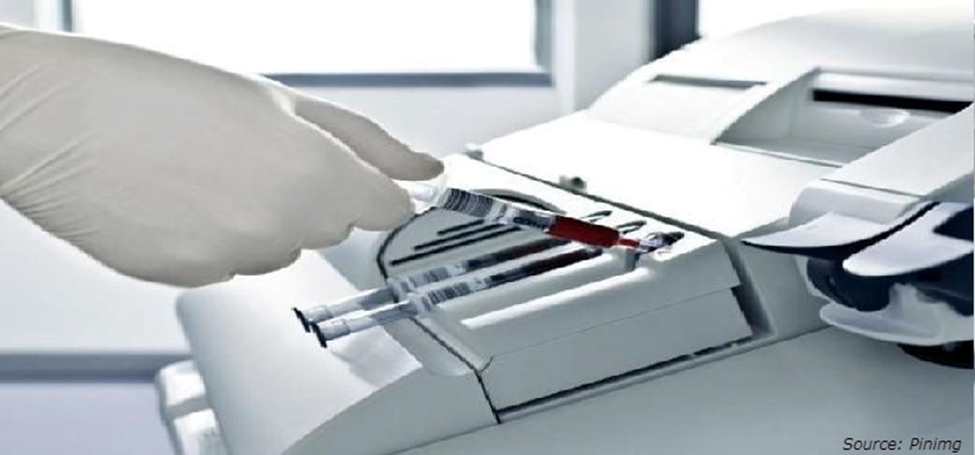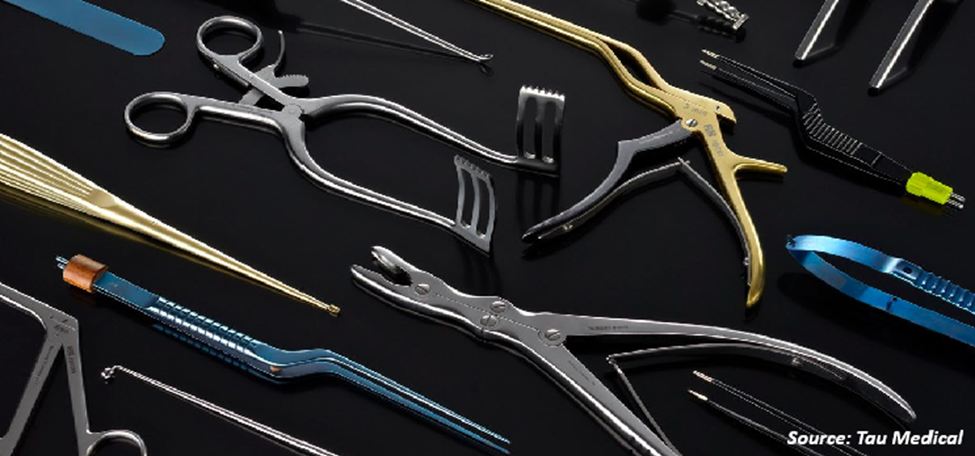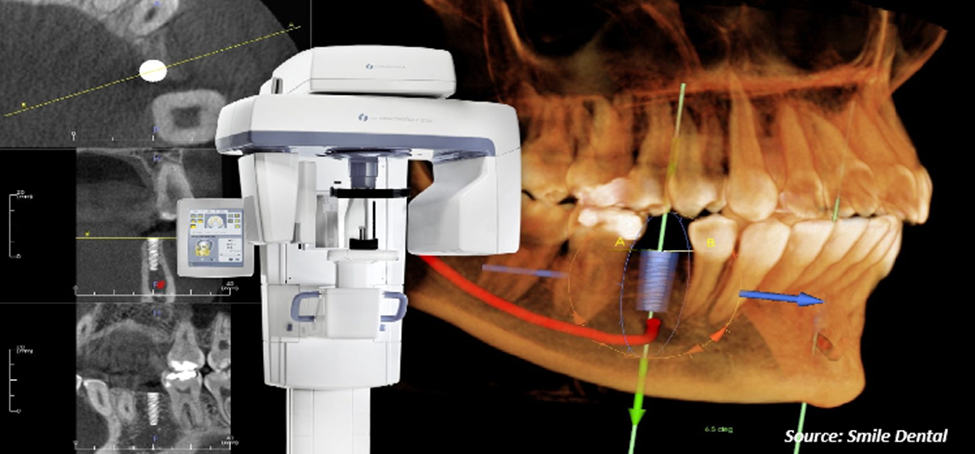
Breath Sensors Market by Technology (Infrared Spectroscopy, Gas Chromatography-Mass Spectrometry (GC-MS), Electrochemical Sensors, Colorimetric Sensors, and Others), by Application (Diabetes Detection, Cancer Detection, Asthma and Chronic Obstructive Pulmonary Disease (COPD), Gastrointestinal Disorders, and Other Application), and by End User (Hospitals and Clinics, Research Laboratories, Diagnostic Centers, and Homecare)– Global Opportunity Analysis and Industry Forecast – 2024–2030
Breath Sensors Market Overview
The global Breath Sensors Market size was valued at USD XXX billion in 2023 and is predicted to reach USD YYY billion by 2030 with a CAGR of XY% from 2024-2030. Breath sensors, also known as breath analyzers or breathalyzers are non-invasive diagnostic tools designed to analyze a patient's breath to detect a variety of diseases.
These breath analysis devices are designed to identify biomarkers linked to conditions such as diabetes, cancer, asthma, and gastrointestinal disorders. The technology offers an alternative to traditional diagnostics methods by providing quicker, less invasive and more cost-effective solutions.
The market’s evolution is marked by collaborations between research institutions and medical device manufacturers that aims to enhance the precision of these sensors. The regulatory approvals and patient awareness are also playing crucial roles in the broader adoption of the breath diagnostic technologies in clinical settings.
Therefore, the growing collaborations, along with regulatory advancements and increasing patient awareness, are driving the widespread adoption of breath sensors, positioning the market as a promising solution for non-invasive disease diagnosis.
Market Dynamics and Trends
The increasing adoption of nanotechnology devices fuels the breath sensors market growth due to their ability to enhance sensor sensitivity and accuracy. Nanotechnology enables the development of highly sensitive materials and nanoscale sensors that detect minute concentration of biomarkers in breath samples.
According to the NMSC report, the nanotechnology market is valued at USD 1.19 billion in 2019 and it is projected to reach 3.31 billion by 2030 with a CAGR of 10.1%. Thus, the integration of advanced nanotechnology-based sensors by healthcare providers is driving the breath sensors market expansion which is fueled by the demand for more precise and efficient diagnostic tools.
Moreover, the rising incidence of chronic diseases such as asthma, COPD, and diabetes drives the demand for innovative diagnostic tools that further propels the growth of the market. The prevalence of these conditions heightens the need for advance diagnostic solutions that offer accurate, early detection and ongoing monitoring of a patient.
According to the latest report published by the International Diabetes Federation, the number of people living with diabetes accounted for around 537 million in 2021 and this figure is projected to reach 738 million by 2045 that is an increase of 27.2% in the span of 21 years.
Consequently, this projected growth accelerates the development and adoption of advance technologies including breath detection technology to improve disease management and patient outcomes.
Furthermore, the increase in healthcare spending fuels the growth of the breath sensors market as it enables investment in advanced diagnostic technologies and innovative solutions. Higher budget allocations lead to a greater funding for development and deployment of advanced tools for disease management and detection.
According to the latest report published by Centers for Medicare & Medicaid Services, the healthcare expenditure of the U.S. grew to USD 4.5 trillion in 2022 from USD 3.8 trillion in 2019 an increase of 18.4% within 3 years.
Additionally, as per the latest report published by the World Bank, Germany’s healthcare expenditure per capita accounted for USD 8,166 in 2022 as compared to the USD 5,197 in 2014, marking an increase of 57.1%. Subsequently, such boost in financial resources supports the expansion and adoption of sophisticated diagnostic technologies that improves the overall healthcare outcomes.
However, complex regulatory requirements and approvals for new diagnostic devices are time-consuming and costly that in turn hinders the growth of the market. On the contrary, the integration of breath sensors with digital health platforms and wearable technologies enhance remote monitoring and management for diseases that creates future growth opportunities for the industry.
For instance, in April 2024, Breath AI launched Breath Band a wearable device designed to measure and analyze breathing patterns that aims to provide users with insights into their respiratory health including individuals with asthma or COPD. The adoption of such integrated solutions drives innovation and expansion in the market by offering improved disease management and enhanced patient outcomes.
Market Segmentation and Scope of the Study
The breath sensors market report is divided on the basis of technology, application, end user, and region. On the basis of technology, the market is divided on the basis of infrared spectroscopy, gas chromatography-mass spectrometry (GC-MS), electrochemical sensors, colorimetric sensors, and others.
On the basis of application, the market is classified into diabetes detection, cancer detection, asthma and chronic obstructive pulmonary disease (COPD), gastrointestinal disorders, and other application. On the basis of end user, the market is bifurcated into hospitals and clinics, research laboratories, diagnostic centers, and homecare. Regional breakdown and analysis of each of the aforesaid segments includes regions comprising of North America, Europe, Asia-Pacific, and RoW.
Geographical Analysis
North America dominates the breath sensors market share at present and is projected to continue its dominance throughout the forecast period. This is owing to the regions robust healthcare infrastructure that supports the adoption of advanced diagnostic tools.
According to the latest report published by the World Bank, the U.S. healthcare expenditure per capita accounted for USD 12,473 in 2022 as compared to 8,274 in 2012, an increase of 50.7% in a decade.
Therefore, the growing healthcare expenditure focuses on improving diagnostic accuracy and patient outcomes that in turn accelerates the breath sensors market demand and propels the growth in the region.
Moreover, the increasing prevalence of chronic diseases further fuels the growth of the market in the region. As conditions such as Asthma and Diabetes become widespread it necessitates the demand for advanced diagnostic tools including portable breath sensors that provides early detection of diseases.
According to the Government of Canada, the country’s 45.1% of the population is affected by one major chronic disease as compare to 44% in 2019. This rise in chronic health issues drives innovation and adoption of these technologies thereby leading to the significant expansion of the market in the region.
On the other hand, Asia-Pacific region is expected to show a steady rise in the breath sensors market trends. This is due to the growing aging population in the region that increases the demand for innovative healthcare solutions to monitor and manage age related chronic conditions.
According to the latest report published by the World Bank, China’s population aged above 65 accounted for 14% of the total population in 2022 as compared to 10% in 2014. The increasing number of elderly patients drives the demand for advanced breath sensors technologies by necessitating the need for more effective and convenient diagnostic tools that contributes to the expansion on the market.
Furthermore, the growing prevalence of diseases such as cancer and asthma further fuels the growth of the market in the region. These diseases increase the demand for innovative monitoring and diagnostic tools in the region.
According to the latest report published by the Indian Council of Medical Research, the number of cancer cases in India accounted for 1.46 million in 2022 as compared 1.39 million in 2020, an increase of 5% in the period of 2 years. This increase in health concerns accelerates the adoption of breath sensors that provides efficient approach for early detection and continuous management of these diseases.
Competitive Landscape
Various players in the breath sensors industry include Owlstone Medical Ltd., Avelo AG, Breathomix BV, Eversens, Deversify AB, The eNose Company, Bedfont Scientific Ltd, Bosch Healthcare Solutions GmbH, Fujitsu Limited, and Vocxi Health. These companies are opting various strategies such as product launches to maintain their dominance in the market.
For instance, in April 2023, Owlstone Medical Ltd., launched OMED Health a digital platform that offers breath-based diagnostic tests, point-of-care devices, and support resources for digestive health conditions.
Moreover, in February 2021, Bedfont launched iCOquit a portable, personal Bluetooth, carbon monoxide (CO) device to help people quit the smoking by providing users with immediate feedback on their CO levels.
Key Benefits
-
The report provides a quantitative analysis and estimations of the breath sensors market from 2024 to 2030, which assists in identifying the prevailing industry opportunities.
-
The study comprises a deep-dive analysis of the current and future breath sensors market trends to depict prevalent investment pockets in the sector.
-
Information related to key drivers, restraints, and opportunities and their impact on the market is provided in the report.
-
Competitive analysis of the key players, along with their market share is provided in the report.
-
SWOT analysis and Porters Five Forces model is elaborated in the study.
-
Value chain analysis in the market study provides a clear picture of roles of stakeholders.
Breath Sensors Market Key Segmentation
By Technology
-
Infrared Spectroscopy
-
Gas Chromatography-Mass Spectrometry (GC-MS)
-
Electrochemical Sensors
-
Colorimetric Sensors
-
Others
By Application
-
Diabetes Detection
-
Cancer Detection
-
Asthma and Chronic Obstructive Pulmonary Disease (COPD)
-
Gastrointestinal Disorders
-
Other Application
By End User
-
Hospitals and Clinics
-
Research Laboratories
-
Diagnostic Centers
-
Homecare
By Region
-
North America
-
The U.S.
-
Canada
-
Mexico
-
-
Europe
-
The UK
-
Germany
-
France
-
Italy
-
Spain
-
Denmark
-
Netherlands
-
Finland
-
Sweden
-
Norway
-
Russia
-
Rest of Europe
-
-
Asia-Pacific
-
China
-
Japan
-
India
-
South Korea
-
Australia
-
Indonesia
-
Singapore
-
Taiwan
-
Thailand
-
Rest of Asia Pacific
-
-
RoW
-
Latin America
-
Middle East
-
Africa
-
REPORT SCOPE AND SEGMENTATION:
|
Parameters |
Details |
|
Market Size in 2023 |
USD XXX Billion |
|
Revenue Forecast in 2030 |
USD YYY Billion |
|
Growth Rate |
CAGR of XY% from 2024 to 2030 |
|
Analysis Period |
2023–2030 |
|
Base Year Considered |
2023 |
|
Forecast Period |
2024–2030 |
|
Market Size Estimation |
Billion (USD) |
|
Growth Factors |
|
|
Countries Covered |
28 |
|
Companies Profiled |
10 |
|
Market Share |
Available for 10 companies |
|
Customization Scope |
Free customization (equivalent up to 80 working hours of analysts) after purchase. Addition or alteration to country, regional, and segment scope. |
|
Pricing and Purchase Options |
Avail customized purchase options to meet your exact research needs. |
Key Players
-
Owlstone Medical Ltd.
-
Avelo AG
-
Breathomix BV
-
Eversens
-
Deversify AB
-
The eNose Company
-
Bedfont Scientific Ltd.
-
Bosch Healthcare Solutions GmbH
-
Fujitsu Limited
-
Vocxi Health




 Speak to Our Analyst
Speak to Our Analyst































